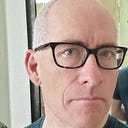Beneath Our Feet
Walking connects the present to the past in a spiritual way. The steps you take were taken by someone before, and someone else before that. Who was that person? What did they think when admiring the same vistas that you see before you now?
If your family has lived in this place for generations, walking the same steps has an even deeper connection. Perhaps the family’s oral history gives some depth to your thoughts. Perhaps your grandparents farmed this land or walked this way to school.
The reverence of walking through a cemetery stirs the soul as much as it stills the mind. The bones of someone’s ancestors lie beneath your feet. Whatever their life experience in this place, may they rest in peace. Their marker may reduce their life to a pair of dates; their family may rest at their sides, and for a few, their accomplishments may be captured in local history. In Pleasanton, CA, the names of the founding families are assigned to chosen streets and their stories are written in local history. On a peaceful knoll south of town, those founding families rest in Pioneer Cemetery along Sunol Boulevard.
Some of those families date back to Mexican land grants like the Santa Rita Rancho and Rancho Valle de San Jose.
Maps such as this (above) granted legal title to the land formerly held by the Spanish Missions. Before the arrival of the Spaniards, there was no such concept as a legal title. The land belonged to the Ohlone tribes of Native Americans as it had for many thousands of years.
And those families are buried here, too. Right beneath our feet.
At the bottom of the Lagoon or small lake in the map (above), you’ll locate the Alviso Adobe which still stands today. It overlooks a flat area in between the willow thickets and marshland to the north and south. Today, the lake and marshes are gone; the western edge of that area is the Laguna Oaks neighborhood and, to the south, a new Safeway. The southeastern corner of that area is now the Canyon Oaks neighborhood. The remaining portion is generally referred to as the Bernal Property (Augustine Bernal’s home is also shown here).
To Native American ethnologists and anthropologists, those areas are known as CA-ALA-483 (Laguna Oaks), CA-ALA-554,(Safeway), CA-ALA-555 (property adjacent to Safeway) and CA-ALA-613 (Canyon Oaks). Ohlone excavation sites.
In 2011, construction of the Safeway was halted when human remains were found, Ohlone Native America remains. Altogether, more than 500 bodies were found. In 2001–02, 16 Ohlone remains were discovered on the same piece of land when the San Francisco Public Utilities Commission installed a water line. In the late 1990s, 470 Ohlone remains were found when KB Homes developed Canyon Oaks.
The Ohlone were believed to live in temporary homes made of tule (reeds growing near the marsh) because they moved frequently, yet excavation of the Safeway site indicated that they stayed semi-permanently in this location. Mortars and pestles were used to grind nuts and seeds sufficient to feed large numbers; the largest mortar weighed over 200 pounds. The arrangement of the burials, and the beads and carved abalone shells implied a certain class structure and achievements of certain people.
The reverence shown to the Native Americans at these sites pales in comparison to those in Pioneer Cemetery on that peaceful knoll nearby. Excavated bodies receive due care, however. State law requires the developer to seek out the “most likely descendant”; living members of the Muwekma Ohlone tribe. Bodies may be reburied in the Ohlone Cemetery near Mission San Jose in Fremont or returned to the location where they were found. Most of those Ohlone ancestors are beneath the Safeway.
As the rest of the Bernal Property gets developed, no doubt there will be many more bodies found.
There are many land uses identified in the Bernal Property Master Plan: sports fields, a new library, an outdoor amphitheater, etc., but my attention is drawn to Land Use #9: Native American History Reflective Area. Different areas are identified for each and the suggestion for the Land Use #9 is an open area near the dog park. I would like the City to consider the area along the arroyo at the south end of the property adjacent to the railroad tracks near Hearst Elementary (uncolored area at the bottom of the illustration below).
Across the intersection at Valley Avenue from this location is the site of the future Community Farm; another plan from the City of Pleasanton that I fully support. Combined with the open space and the network of trails, it encourages people to connect with nature, to work the land, and appreciate this wonderful area that Ohlone people nurtured for thousands of years before us.
While I would urge the City to consider this portion of the property as reparations and donate the land to the Sogorea Te Land Trust or negotiate a land conservancy with the Muwekma Ohlone tribe, some form of acknowledgment that this is Ohlone land would be appreciated.
For this land was never considered to be “property” that could be owned; it is Mother Earth. It was revered as the source of life and respected, as were their ancestors who were laid to rest there — beneath our feet.
